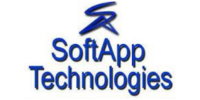-
WhatsApp + 91-9999487949
-
Send Email info@softapptechnologies.com
-
Office No-51/3, 1st floor, Corenthum tower-B, near electronic city metro station, Sector 62, Noida, Uttar Pradesh 201309
AWS Training
Amazon Web Services (AWS) is the world's most comprehensive and broadly adopted cloud, offering over 200 plus fully featured services from data centers globall.
Concept
Amazon Web Service, or AWS, is an online platform providing cost-effective, scalable cloud computing solutions. It offers a range of on-demand operations, such as compute super power, content delivery, database storage, and more, to help enterprises and organizations and datacenter grow.AWS Used
AWS is designed to allow application providers, ISVs, and vendors to quickly and securely host your applications – whether an existing application or a new SaaS-based application. You can use the AWS Management Console or well-documented web services APIs to access AWS's application hosting platform.
IAM
EC2
S3
Route 53
VPS
ElasticBean
Load Blancer
VPN
EBS (Elastic Block Storage)
Storage in Cloud
Auto-scaling
Amazon Virtual Private Cloud (VPC)
Management Tools
Relational Database Service (RDS)
Dynamo DB
EC2
S3
Route 53
VPS
ElasticBean
Load Blancer
VPN
EBS (Elastic Block Storage)
Storage in Cloud
Auto-scaling
Amazon Virtual Private Cloud (VPC)
Management Tools
Relational Database Service (RDS)
Dynamo DB
Introduction to Cloud Computing
Why Cloud Computing?
Benefits of Cloud Computing
Software as a Service
Types of Cloud Computing
Public Cloud
Private Cloud
Horizontal vs vertical scaling
Hybrid Cloud
Community Cloud
Security
Platform as a Service
Cloud Computing Issues
Costing Model
Why Cloud Computing?
Benefits of Cloud Computing
Software as a Service
Types of Cloud Computing
Public Cloud
Private Cloud
Horizontal vs vertical scaling
Hybrid Cloud
Community Cloud
Security
Platform as a Service
Cloud Computing Issues
Costing Model
Understanding AMI
Launching your first AWS instance
On-demand Instance pricing
Spot instance pricing
Setting up security
Reserved Instance pricing
On-demand Instance pricing
Choosing & Creating a new AMI
Public and Private IP’s
Deploying a new instance from the created AMI
Security groups
Key Pairs
Elastic IP’s
Launching your first AWS instance
On-demand Instance pricing
Spot instance pricing
Setting up security
Reserved Instance pricing
On-demand Instance pricing
Choosing & Creating a new AMI
Public and Private IP’s
Deploying a new instance from the created AMI
Security groups
Key Pairs
Elastic IP’s
Create EBS volumes
Delete EBS Volumes
Attach and detach EBS volumes
Mounting and unmounting EBS volume
Creating and deleting snapshots
Creating volumes from snapshots S3(Simple Storage Service)
Delete EBS Volumes
Attach and detach EBS volumes
Mounting and unmounting EBS volume
Creating and deleting snapshots
Creating volumes from snapshots S3(Simple Storage Service)
Get Started with Auto Scaling Using the Console
The lifecycle of autoscaling
Policies of autoscaling
Maintain a Fixed Number of Running EC2 Instances
Dynamic Scaling
The lifecycle of autoscaling
Policies of autoscaling
Maintain a Fixed Number of Running EC2 Instances
Dynamic Scaling
Creating Zones
Understanding routing policies
Hosting a website
Weighted simple and failover policies
Understanding routing policies
Hosting a website
Weighted simple and failover policies
Introduction to Amazon Virtual Private Cloud (VPC)
VPC Advantages
Default and Non-default VPC
Components of VPC
Direct Connect
Describe, create, and manage Amazon Virtual Private Cloud
Amazon VPC, Private Subnet, and Public Subnet
AWS Networking, Security Groups, and Network ACLs
Configuration and management of VPN connectivity
Subnet and Subnet Mask
VPC Advantages
Default and Non-default VPC
Components of VPC
Direct Connect
Describe, create, and manage Amazon Virtual Private Cloud
Amazon VPC, Private Subnet, and Public Subnet
AWS Networking, Security Groups, and Network ACLs
Configuration and management of VPN connectivity
Subnet and Subnet Mask
Introduction to RDS
Different database services of AWS: Amazon RDS, Dynamo DB, Redshift etc.
Configuring the database
Configuring backups
Configuring the maintenance windows
Connecting to the database
Different database services of AWS: Amazon RDS, Dynamo DB, Redshift etc.
Configuring the database
Configuring backups
Configuring the maintenance windows
Connecting to the database
An understanding of DevOps and the modern DevOps toolsets
The ability to automate all aspects of a modern code Source code management tools – CVS, Git
Build tools – Apache Ant, Maven
Test automation tools – JUnit
delivery and deployment pipeline using:
Continuous Integration Tools – Jenkins, Team city
Monitoring tools – Nagio
Configuration management tools – Chef, Puppet, Ansible
The ability to automate all aspects of a modern code Source code management tools – CVS, Git
Build tools – Apache Ant, Maven
Test automation tools – JUnit
delivery and deployment pipeline using:
Continuous Integration Tools – Jenkins, Team city
Monitoring tools – Nagio
Configuration management tools – Chef, Puppet, Ansible
Live Project with DevOps
